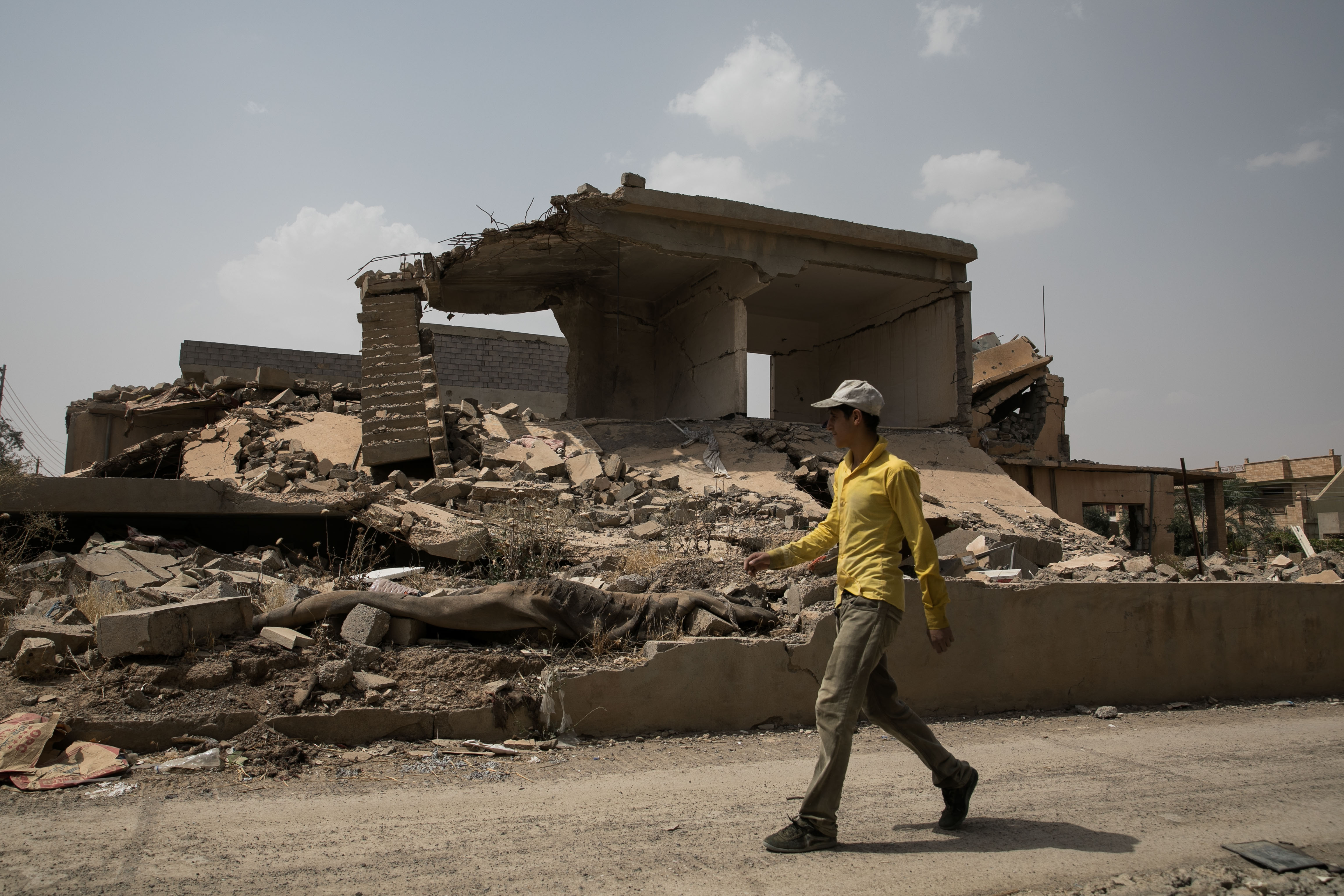Em julho de 2018, com o jornalista João Francisco Gomes, estivemos no Iraque durante uma semana. O foco de reportagem foi o regresso de quem teve de fugir do Estado Islâmico e deixar tudo para trás. Quando voltaram depararam-se com cidades completamente destruídas.
Durante a nossa viagem, estivemos em Erbil (capital do Curdistão iraquiano) e em diversas povoações cristãs da planície de Nínive, nomeadamente Teleskuf, Qaraqosh, Karemles, Bashiqa, Bartella e Alqosh. Grande parte destas povoações foram tomadas pelo Estado Islâmico em agosto de 2014, um mês depois de o grupo jihadista ter tomado Mossul e ali estabelecido a capital do autoproclamado Califado, e assim se mantiveram até à libertação da região, em 2017. A invasão de Mossul e das povoações que rodeiam a cidade obrigou cerca de 150 mil cristãos a fugir da região, procurando refúgio no norte do país, sobretudo no Curdistão. Mais de três anos depois, estas comunidades começaram lentamente a voltar a casa, encontrando as suas aldeias e cidades totalmente destruídas.
Durante a nossa viagem, estivemos em Erbil (capital do Curdistão iraquiano) e em diversas povoações cristãs da planície de Nínive, nomeadamente Teleskuf, Qaraqosh, Karemles, Bashiqa, Bartella e Alqosh. Grande parte destas povoações foram tomadas pelo Estado Islâmico em agosto de 2014, um mês depois de o grupo jihadista ter tomado Mossul e ali estabelecido a capital do autoproclamado Califado, e assim se mantiveram até à libertação da região, em 2017. A invasão de Mossul e das povoações que rodeiam a cidade obrigou cerca de 150 mil cristãos a fugir da região, procurando refúgio no norte do país, sobretudo no Curdistão. Mais de três anos depois, estas comunidades começaram lentamente a voltar a casa, encontrando as suas aldeias e cidades totalmente destruídas.
In july of 2018, I was in Iraq for a week with the journalist João Francisco Gomes. The main focus of the assignment was in the population that had to flee from the Islamic State leaving everything behind. When they got back, they faced the reality, everything was destroyed.
During our journey, we were at Erbil (capital of the Curdish Iraq) and in some christian villages of the Nínive Plain, Teleskuf, Qaraqosh, Karemles, Bashiqa, Bartella and Alqosh. A great proportion were taken by the DAESH in August of 2014 and a month after Mosul was taken and claimed it was the new capital of recently found Califate. The Mosul invasion and its surroundings forced around 150 thousand christians to flee the region, seeking shelter in the north of the country. Three years have passed, and this communinties slowly start to come back home, finding their villages and cities completely destroyed.
During our journey, we were at Erbil (capital of the Curdish Iraq) and in some christian villages of the Nínive Plain, Teleskuf, Qaraqosh, Karemles, Bashiqa, Bartella and Alqosh. A great proportion were taken by the DAESH in August of 2014 and a month after Mosul was taken and claimed it was the new capital of recently found Califate. The Mosul invasion and its surroundings forced around 150 thousand christians to flee the region, seeking shelter in the north of the country. Three years have passed, and this communinties slowly start to come back home, finding their villages and cities completely destroyed.






